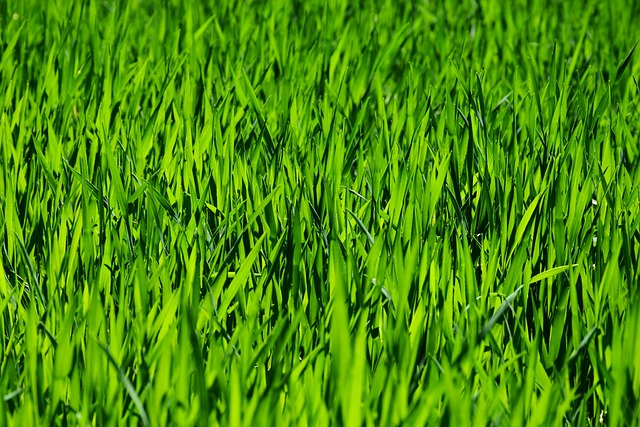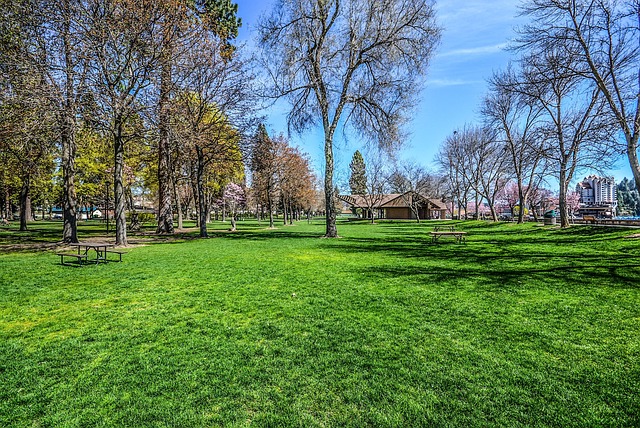The lawn care and landscaping journey begins with meticulous planning. Skilled designers assess site features like sunlight, shade, water, and topography, integrating client visions, aesthetic preferences, functional needs, climate, regulations, and budget. This comprehensive understanding drives the creation of detailed blueprints, 3D models, and plant selections, resulting in sustainable, aesthetically pleasing, and functional outdoor spaces that enhance curb appeal and enjoyment, transforming outdoor areas into harmonious extensions of homes or businesses.
Landscaping design is an art that transforms outdoor spaces into functional and aesthetically pleasing environments. From initial planning to ongoing maintenance, this comprehensive guide delves into the intricacies of creating vibrant landscapes. We explore each stage, from understanding client visions to post-installation care, focusing on both practical aspects like irrigation systems and lawn care, and creative elements such as plant selection and hardscape techniques. Discover how to balance aesthetics and functionality, ensuring your landscape not only looks stunning but also thrives with proper maintenance.
- Planning and Design Phase
- – Understanding the Client's Vision
- – Assessing the Site: Topography, Climate, and Soil Conditions
Planning and Design Phase

The planning and design phase is a crucial step in any lawn care and landscaping project. It involves meticulously envisioning and creating a detailed blueprint for your outdoor space. This process begins with understanding your property’s unique features—its shape, size, existing vegetation, and structural elements like decks or patios. From there, it’s about deciding on the overall style and theme that aligns with your lifestyle and preferences, whether it’s a formal English garden, a relaxed California casual look, or perhaps a contemporary design with clean lines.
During this phase, skilled landscape designers will also consider factors such as sunlight exposure, shade needs, water management, and how each element will function and look together over time. They’ll create concept drawings and 3D models to help you visualize the final result. This enables informed decisions about plant selection, hardscaping materials, and any necessary infrastructure upgrades, ensuring your lawn care and landscaping project is both aesthetically pleasing and practical.
– Understanding the Client's Vision

When taking on a lawn care and landscaping project, it’s imperative to start by understanding the client’s vision. This involves having in-depth conversations to grasp their aesthetic preferences, functional needs, and any specific design elements they have in mind. By actively listening and asking relevant questions, landscapers can tailor their proposals to match the client’s aspirations. A well-defined brief ensures that the final landscape design not only meets but exceeds expectations.
During these discussions, it’s beneficial to consider factors like climate, local regulations, and budget constraints. With this knowledge, designers can offer practical solutions while staying true to the client’s creative vision. This collaborative approach fosters trust and creates a harmonious outdoor space that becomes an extension of their home or business, enhancing curb appeal and overall enjoyment.
– Assessing the Site: Topography, Climate, and Soil Conditions

Assessing a site is a crucial step in any landscaping project, as it forms the foundation for successful lawn care and landscaping design. Topography plays a significant role, dictating the slope and contour of the land, which impacts water flow and the overall layout. Understanding these natural features allows designers to create functional and aesthetically pleasing outdoor spaces that adapt to the existing environment.
Climate conditions are equally important, as they determine the types of plants and materials best suited for the region. Local climates influence temperature, precipitation, and wind patterns, all of which can affect lawn health and long-term landscape sustainability. Moreover, soil analysis is vital for effective landscaping. Different soil types have varying nutrient contents and drainage capabilities, requiring specific care to ensure lush lawns and vibrant gardens. Proper site assessment ensures that the chosen design aligns with local conditions, resulting in durable landscapes that thrive over time.
In the realm of lawn care and landscaping, a successful project begins with meticulous planning. By understanding the client’s vision and thoroughly assessing site conditions, including topography, climate, and soil health, designers can create vibrant, sustainable outdoor spaces. This comprehensive approach ensures that every element—from carefully selected plants to functional hardscapes—harmonizes with the environment, resulting in a beautiful and enduring landscape that enhances any property.
